Ceramic vs porcelain tiles – a look at which is better for a bathroom in 6 design scenarios
Put the ceramic vs porcelain tile debate to rest by comparing their qualities in these 6 common situations


If you're having the ceramic vs porcelain tile debate, it can be complicated to wrap your head around – after all, aren't they essentially the same thing? Due to how they're made, there are differences between the two, and when it comes to comparing them in different situations, they each have their advantages over the other.
Largely, porcelain tiles are ceramic that have been dry pressed into molds under high pressure and fired at extremely high temperatures. This makes them more dense and strong. Both are great for bathrooms, however, it's the type of bathroom and its use that matters when it comes to selecting the tiles.
When it comes to bathroom tile ideas, we've conducted a close comparison between ceramic and porcelain. Take a look at these six scenarios to know which of the two would work better.
6 scenarios to compare ceramic and porcelain tiles
Ceramic or porcelain isn't always your first choice in selecting tiles. 'The great thing about designing a bathroom is the unlimited choice in tiles nowadays,' says interior designer Ann Marie Cousins, founder of AMC Design. 'From patterns, and block colors to different textures, the world is your oyster.'
But while color, pattern and style are key, there are some functional elements that are important too for a practical, modern bathroom. 'The thing to remember for bathrooms is that tiles need to be anti-slip, suitable for high foot traffic, and able to survive in a wet space,' adds Ann Marie.
But which type of tile rates highest for these key criteria?
1. Which tiles are best when you're renovating a bathroom on a budget?
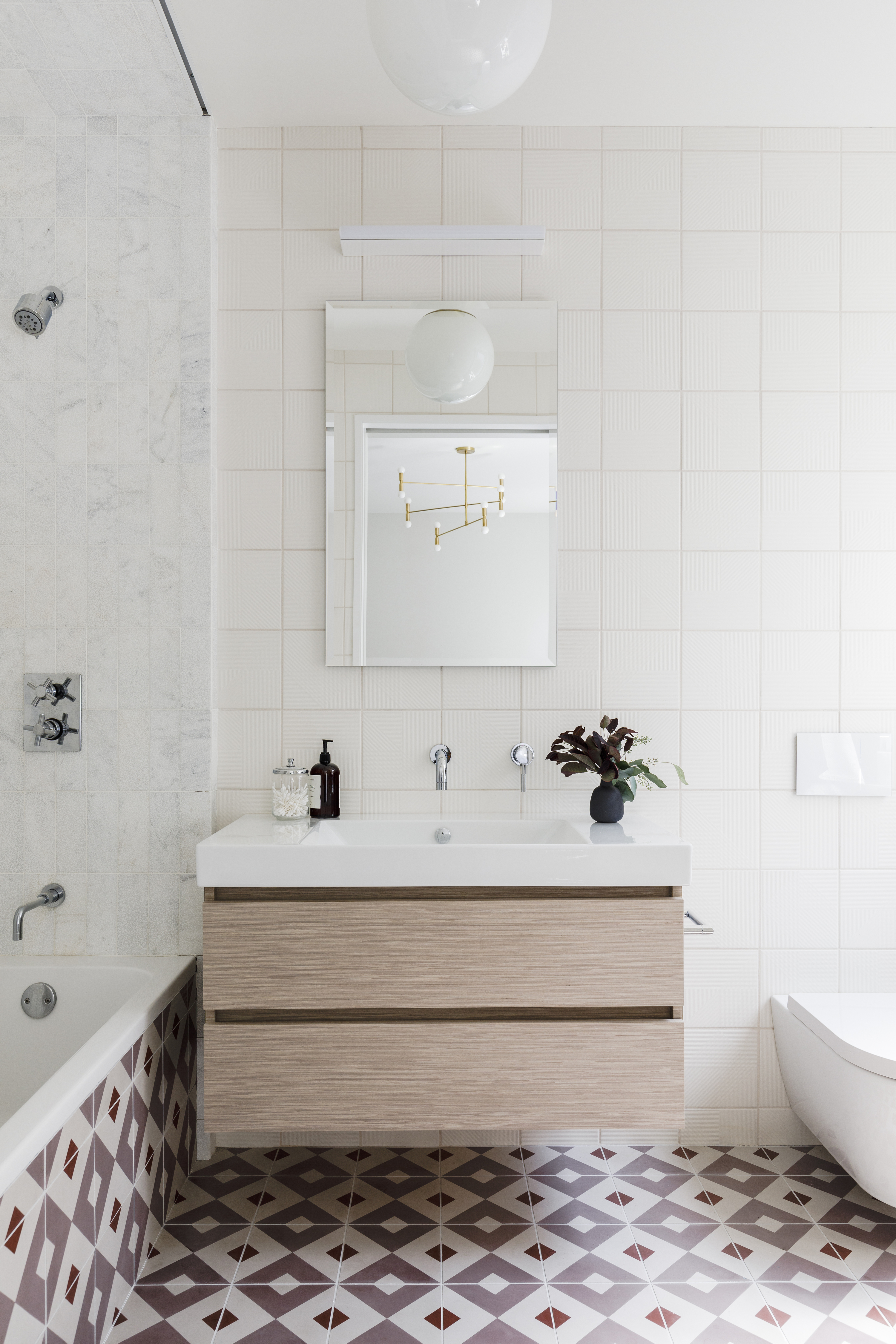
When it comes to a reno, not everyone is looking to splurge. A beautiful, modern bathroom can be transformed with just eye-catching tiles. Usually, while porcelain tiles aren't super costly, they are generally more expensive than ceramic. If you’re on a tight budget, ceramic will fit the bill.
'You could even go in for a combination of porcelain and ceramic tiles,' say Rudraksh Charan and Priyanka Khanna, founders and architects at 42MM Architecture. 'Porcelain slabs are superior to ceramic slabs in durability, while ceramic tiles give a larger variety in design at a lower cost. For a budget-based bathroom, the durability and water-resistant nature of tile is highly recommended in the floor and shower area.'
'However, a patterned and colored backsplash for dry area walls can help deliver a good design at minimal expense,' the architects add. 'While designing a space on a budget it is extremely important to understand the overall durability of the product and view the budget not just at the point of creation but throughout the lifespan of the space.'
Another important factor to consider when you're designing on a budget is the size of the tile as to how much it will cost to tile a bathroom.
'It is often the case that the smaller tiles can be expensive as you’ll need more of them. Plus, they're likely to be more labor-intensive to lay them,' says Ann Marie. 'If you're decorating on a budget, opt for larger tiles on the floor and walls. This can be cheaper but also for installation as the tiles are easier and quicker to lay than lots of small, individual ones.'
'With tiling, prep and good workmanship are key, and once you’ve chosen a great product, ask for recommendations and be prepared to wait for good trades,' Ann Marie advises.
2. Which of the two is more water-resistant?
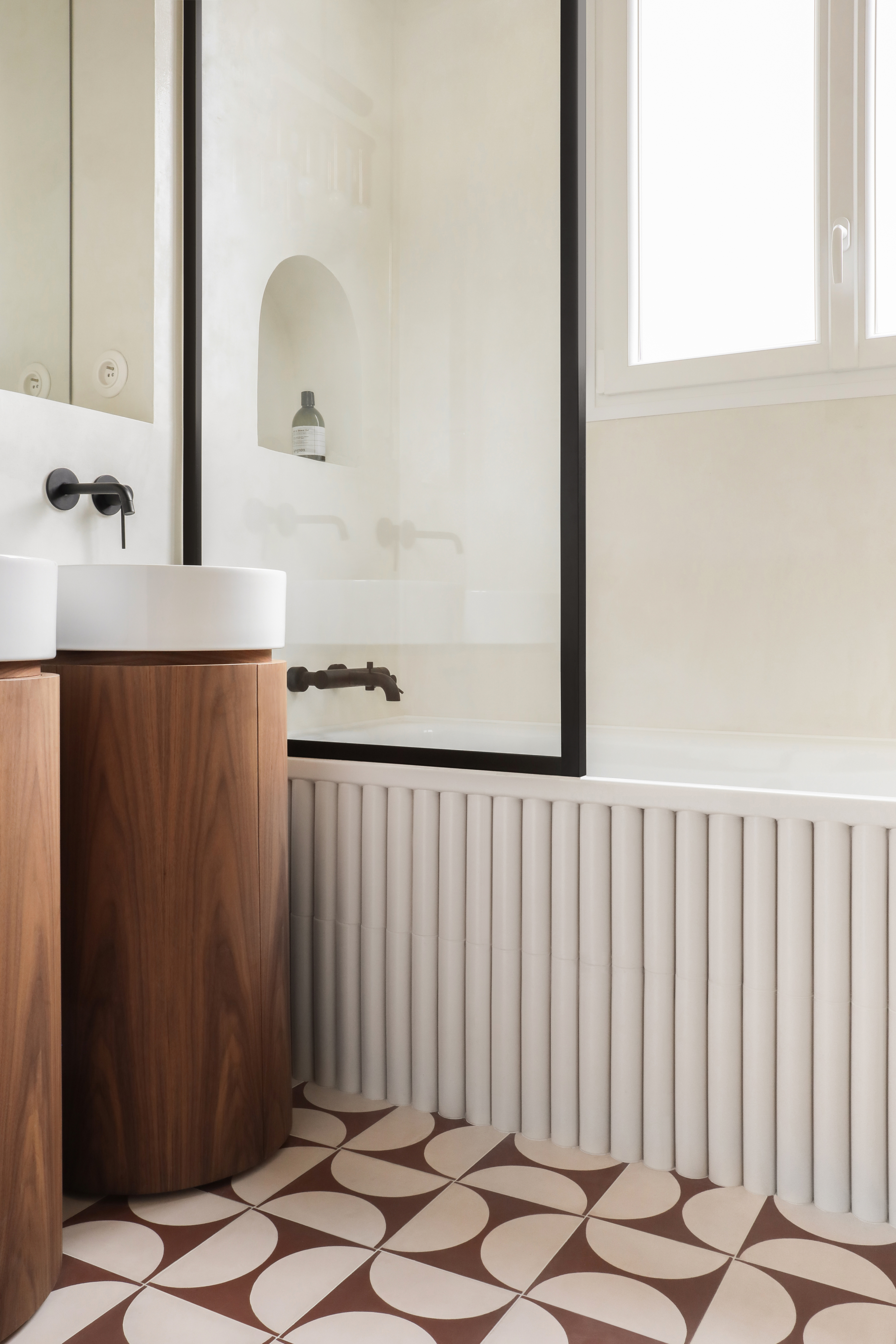
According to the Tile Council-North America Inc, porcelain tiles absorb less than 0.5% of moisture. This is because it is naturally dense, which means it’s harder to penetrate, ideal for bathroom flooring, and especially walk-in showers, as it makes these tiles practically waterproof.
'Although porcelain tiles and ceramic tiles share many similarities, both are clay-based and kiln-fired, but there are few differences in ingredients and production methods,' says architect Aparna Kaushik. 'The major difference between porcelain and ceramic tiles is their water absorption rate. Porcelain tiles are less porous than ceramic tiles making them better for bathrooms and wet areas.'
3. Which tile is better in a high traffic area?
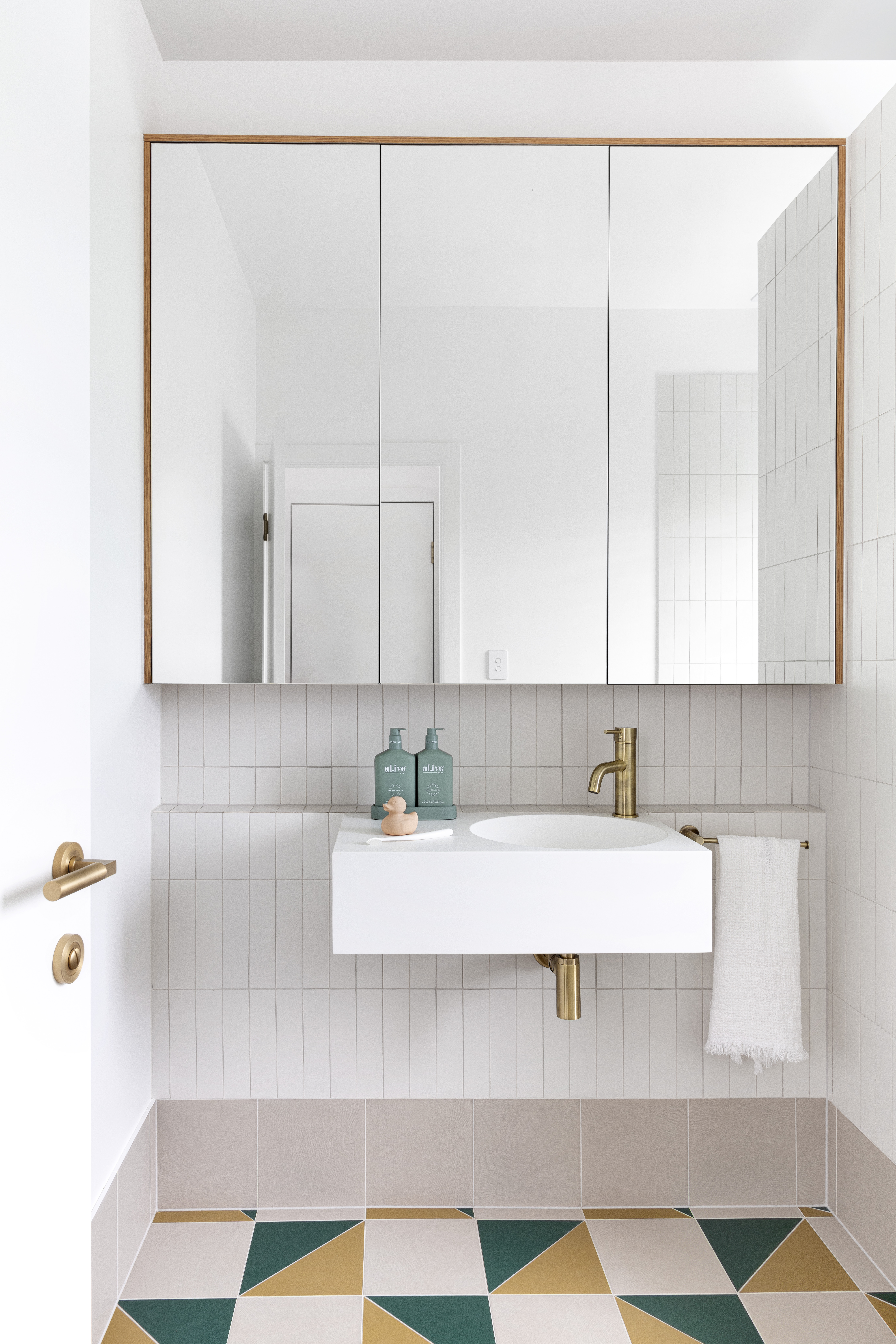
The good news is that both ceramic and porcelain are good for high-traffic areas, especially as a small bathroom flooring option. However, porcelain is denser and offers long-term resistance to scratches, so it makes for a slightly better option. Through-body porcelain, where the color on top of the tile goes all the way throughout the tile’s body, is especially scratch-resistant. Households with children and pets especially do better with porcelain’s durability.
'Porcelain tiles are tough and easy to maintain when it comes to designing a bathroom that receives high traffic,' says Aparna. 'Simply washing them will keep them in good shape. Porcelain tiles will remain the same with regular cleaning and will not harbor bacteria like some other porous materials, thus making them easy to maintain over time.'
'If you love the look of both tiles, then in a high traffic area, choose porcelain for the floor, and go for ceramic for bathroom wall tiles,' adds Ann Marie.
4. When renovating an old, traditional home, which tile should you go for?
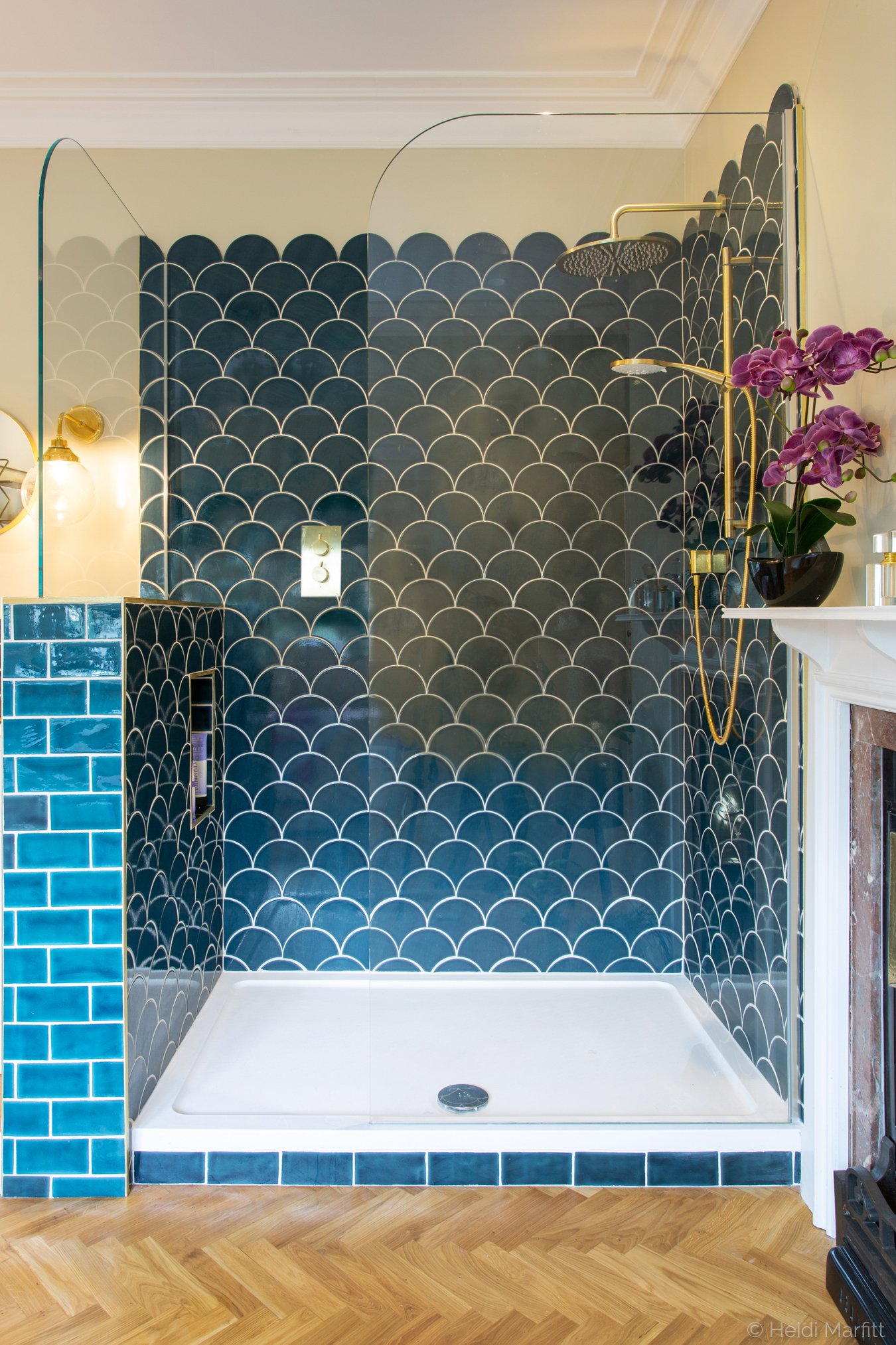
If you own a period home and you plan to purchase new tiles, it is worth asking yourself if you'd like to create a similar look or give the home a modern push. When it comes to style, there are some practical and technical points to consider apart from issues of safety and light.
For bathroom tiles, think about whether you want them to reflect that vintage style or simply acknowledge it in some subtle way? You could also choose bathroom floor tiles that they can be laid over an existing floor, particularly useful if you live in an apartment, and they are inherently slip-resistant because of all the grout.
An important consideration in choosing tiles while restoring the home is their longevity – in period homes, it is difficult to update the property every year so you want to choose something that will last another generation.
'The life of a tile will depend on how you look after it and how it is laid,' says Ann Marie. 'It is worth doing your research before buying tiles to find out how to properly look after and maintain them. It is the case however that thicker, denser tiles tend to be stronger as they can withstand movement better than narrower tiles, but it is best to assess the room first and go from there.'
5. When designing a luxurious, spa-like bathroom which tile is a better choice?
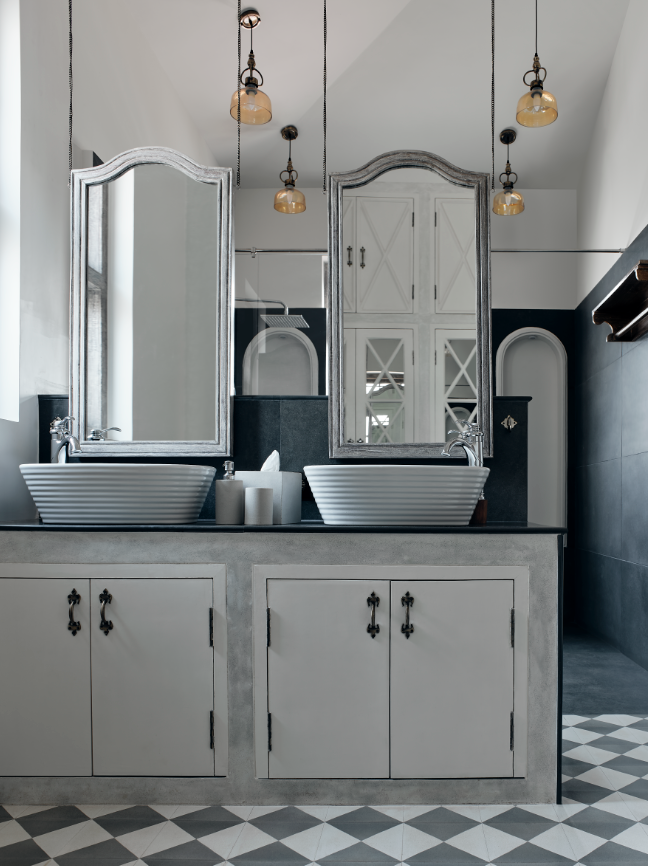
For spa bathroom ideas, have the tiles as the top priority. After all, you want to set the right mood from the moment you walk into the space. Before you choose the tile, decide what type of spa atmosphere you are going for. Would you like a zen vibe or more like a Tuscan space? Just your tiles can help you accomplish that.
'For a luxury spa space, porcelain might be a winner. The larger tile sizes can give that zen calm feel with fewer grout lines,' says Jennifer Morris, founder of JMorris Design.
6. Which tile is better for a walk-in shower?
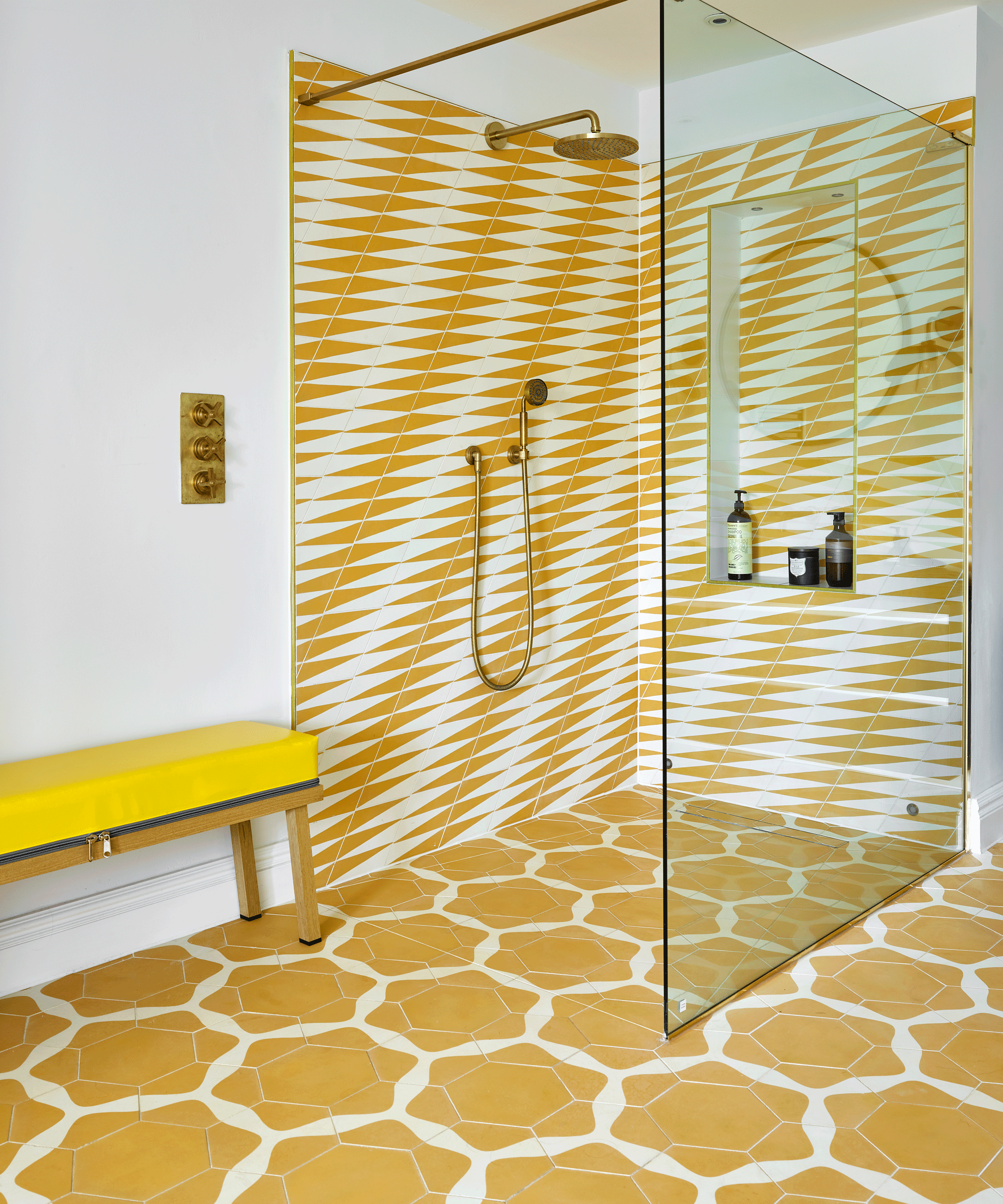
'We recommend using a porcelain tile for your bathroom floor for a water-resistant, durable room foundation,' says Amanda Telford of CTD. 'However, selected glazed porcelain tiles can be used on feature walls.'
'Textured porcelain tiles with anti-slip properties are ideal for wet room floors as well as being great for underfloor heating,' Amanda adds. 'You might also consider matt mosaics with the extra grout lines to provide additional slip-resistant properties.'
'If you want to use ceramic tiles in a wet area, proper and good quality grouting has to be ensured,' adds architect Aparna Kaushik.
Which are cheaper, porcelain or ceramic tiles?
Whether you are going to layout a small bathroom or a large one, do a little research before you zero in on the tiles you want. Usually, it is difficult to find a quality porcelain tile for under $3 per square foot. The high-end ones easily surpass $5 per square foot. Ceramic, on the other hand rarely costs more than $4 per square foot, and can offer affordable styles under $2 per square foot.
However, do note that not all porcelain tile is costly, but usually, if you’re on a tight budget, ceramic will fit the bill.
'In comparison to machine-made ceramic tiles, the cost of ceramic and porcelain can be closer,' says Molly Torres, founder of DATE Interiors. 'Be advised that if you need porcelain to be cut in the field it can increase your labor price because it is harder to cut.'
Be The First To Know
The Livingetc newsletters are your inside source for what’s shaping interiors now - and what’s next. Discover trend forecasts, smart style ideas, and curated shopping inspiration that brings design to life. Subscribe today and stay ahead of the curve.

Aditi Sharma Maheshwari started her career at The Address (The Times of India), a tabloid on interiors and art. She wrote profiles of Indian artists, designers, and architects, and covered inspiring houses and commercial properties. After four years, she moved to ELLE DECOR as a senior features writer, where she contributed to the magazine and website, and also worked alongside the events team on India Design ID — the brand’s 10-day, annual design show. She wrote across topics: from designer interviews, and house tours, to new product launches, shopping pages, and reviews. After three years, she was hired as the senior editor at Houzz. The website content focused on practical advice on decorating the home and making design feel more approachable. She created fresh series on budget buys, design hacks, and DIYs, all backed with expert advice. Equipped with sizable knowledge of the industry and with a good network, she moved to Architectural Digest (Conde Nast) as the digital editor. The publication's focus was on high-end design, and her content highlighted A-listers, starchitects, and high-concept products, all customized for an audience that loves and invests in luxury. After a two-year stint, she moved to the UK and was hired at Livingetc as a design editor. She now freelances for a variety of interiors publications.
-
 Turns Out the Coolest New Café is Actually In Your Kitchen — Here's How to Steal the Style of TikTok's Latest Trend
Turns Out the Coolest New Café is Actually In Your Kitchen — Here's How to Steal the Style of TikTok's Latest TrendGoodbye, over-priced lattes. Hello, home-brewed coffee with friends. TikTok's 'Home Cafe' trend brings stylish cafe culture into the comfort of your own home
By Devin Toolen Published
-
 5 Bathroom Layouts That Look Dated in 2025 — Plus the Alternatives Designers Use Instead for a More Contemporary Space
5 Bathroom Layouts That Look Dated in 2025 — Plus the Alternatives Designers Use Instead for a More Contemporary SpaceFor a bathroom that feels in line with the times, avoid these layouts and be more intentional with the placement and positioning of your features and fixtures
By Lilith Hudson Published